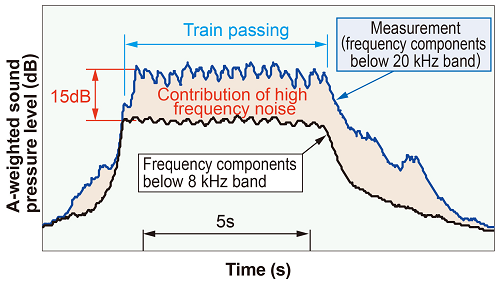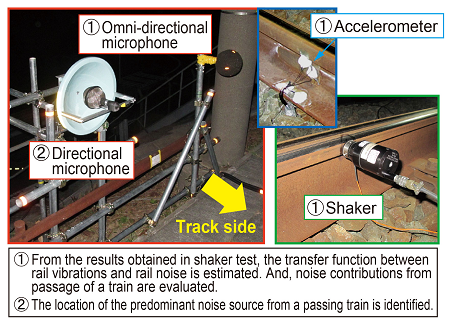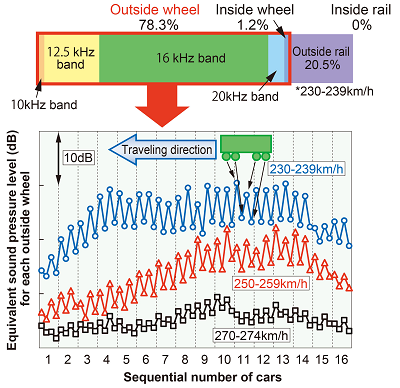19. Method for evaluating characteristics of wheel/rail noise generated in curved track sections
It is common knowledge that squeal noise can occur when a train runs through a sharp curve. However, even on a gently curved section, wheel/rail noise due to wheel and rail vibrations above 10 kHz (referred to as “high-frequency noise”) close to the upper limit of the audible frequency range can occur and significantly contributes to wayside noise (Fig. 1).
In order to develop measures to reduce this noise, it is necessary to understand its characteristics, such as the contribution to overall noise of each noise source and source localization
As such, an evaluation method was designed (Fig. 2) combining a transfer function between rail noise and rail vibrations, and source localization technology in the form of a directional microphone.
The method was tried on a commercial line which, as shown in Fig. 1, revealed that the dominant source of high-frequency noise was the outside leading wheel of each bogie (in the traveling direction).
Furthermore, it is found that the level of the noise depends on train speed (Fig. 3).
The method can be applied to evaluate the characteristics of wheel/rail noise, including high frequency noise, in order to guide the development of mitigation measures.



